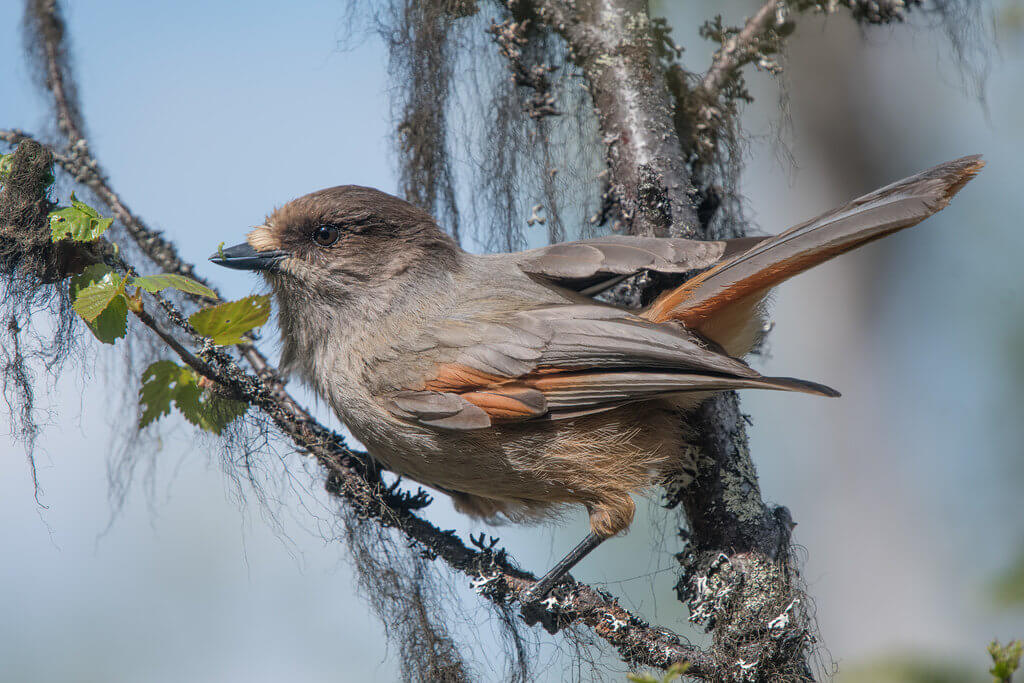
Tim writes; As the name suggests, this species occurs in the boreal forest zone across Siberia but also occurs in northern Scandinavia. They occur at low densities and are not easy to find, but when you do find them they can be incredibly confiding. This one is eating a tiny caterpillar and we also saw them eating Wood Ants, but they are totally omnivorous, even eating scraps from wolf or wolverine kills. They cache food during the longer days to help them through the short, lean days of winter. This one was in a group of three that I photographed in Sweden.
John Ray (1678) called it the Greater Redstart because of its similar orange tail. Its scientific name is Perisoreus infaustus, the last part means unlucky, because they were thought to be a bird of ill omen. The generic name is one of few names that hasn’t been properly deciphered as there are two schools of thought. One from Greek (Perisoreuo) meaning to bury beneath, possibly from its habit of caching food. But in Latin it translates loosely as “very auspicious”, possibly relating to its reputation as a bird of ill omen.
[registration_form]
That’s great Tim: the Latin name explains the Jay’s behaviour – or is it vice versa?
Yes, this bird is extraordinarily tame even in the deepest parts of travellerthe taiga. On occasion a jay will appear out of nowhere and follow the lonely like a shadow through the trackless forest, fluttering and calling softly from bough to bough. The bird is so confident it will even land close to any camp fire to share crumbs of food.
An old Sami once explained that foresters and hunters regard it as bad luck to harm this jay. And so its confiding nature prevails for mile after mile, from one individual to another.
It seems that legends and superstitions have strong ecological consequences. In this example, human and avian behaviours are destined to be mutually reinforcing.